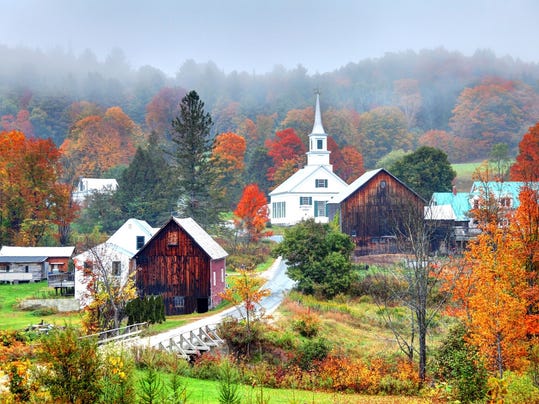
Break out the pumpkins, colorful leaves and crisp walks: The first day of fall is Friday — even if it won't feel like it across much of the U.S.
The autumnal equinox, which marks the astronomical start of fall,
arrives Friday at 4:02 p.m. ET (that's 3:02 CT, 2:02 MT and 1:01 PT).
At a precise moment each September, on either the 21st, 22nd or 23rd, the sun appears directly above the equator, marking the exact time of the autumnal equinox here in the Northern Hemisphere.
But for much of the nation, there won't be much of a fall feeling in the air Friday or during the first weekend of autumn. Temperatures will soar into the summer-like 80s and 90s across much of the central and eastern U.S., while folks in portions of the West will dig out from heavy snow.
Record highs are possible in the Upper Midwest, around the Great Lakes and in New England. The National Weather Service in Marquette, Mich., said "some locations may see maximum temperatures that have never been so high this late in the year."
Incredibly for late September, the heat index will approach 100 degrees this weekend as far north as Illinois and Indiana.
Meanwhile, folks in parts of the western U.S. will go straight from summer to winter, with heavy snow and icy cold forecast to continue in portions of the northern Rockies and Great Basin. The weather service in Great Falls. Mont., warned of "wet and raw conditions for young livestock and outdoor recreation."
Up to two feet of snow is possible in the Ruby Mountains of Nevada by Friday, the weather service said, with overnight wind chills dipping into the 20s.
Fall forecast
In the East, relief from the heat won't come until later next week, and even that may be brief. While a spell of cooler weather may sweep in toward the end of September into the start of October, AccuWeather said, warmth may again follow as October progresses.
Long term, above-average temperatures are forecast from October through December for nearly the entire U.S., according to the Climate Prediction Center.
Beyond that, a predicted La Niña climate pattern should be a major player in the USA's winter weather, the prediction center said. La Niña is marked by cooler-than-average water in the central Pacific Ocean.
A typical La Niña winter features drier and warmer-than-average weather for much of the southern tier of the U.S., while the Northwest tends to be colder and wetter than usual.
Fun facts about the equinox
The word equinox comes from the Latin words "aequalis" and "nox," meaning equal night. On the autumnal (and the spring) equinox, day and night are both roughly 12 hours long over most of the world.
This is true from as far north as Utqiaġvik (formerly Barrow), Alaska — north of the Arctic Circle — to as far south as Wellington, New Zealand, the world's southernmost capital city.
On Friday, Utqiaġvik's sunrise is at 8:08 a.m. and sunset is at 8:28 p.m. In Wellington, the sun rises Friday at 6:11 a.m., and sets at 6:17 p.m.
Day and night aren't exactly 12 hours long because the Earth's atmosphere refracts, or bends light, in an optical illusion that brings more daylight than there really is.
Though astronomers say summer ends Thursday, meteorologists and climatologists said summer ended Aug. 31, the final day of the three months of June, July and August.
For the 12% of the world's population that lives south of the equator in the Southern Hemisphere, Friday marks the vernal or spring equinox, the beginning of spring.












No comments:
Post a Comment